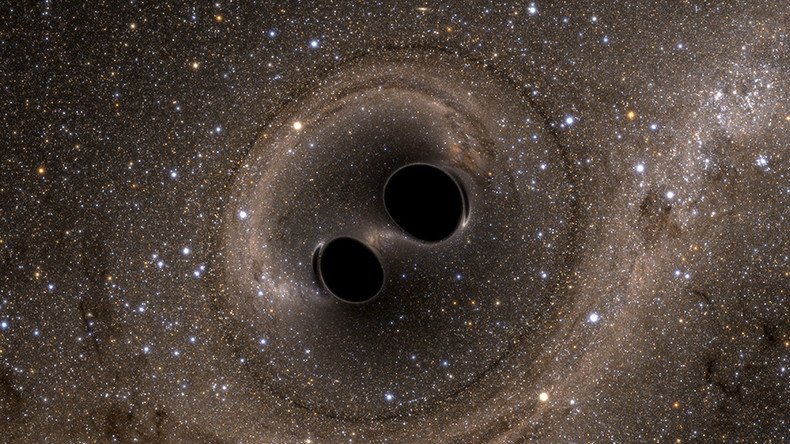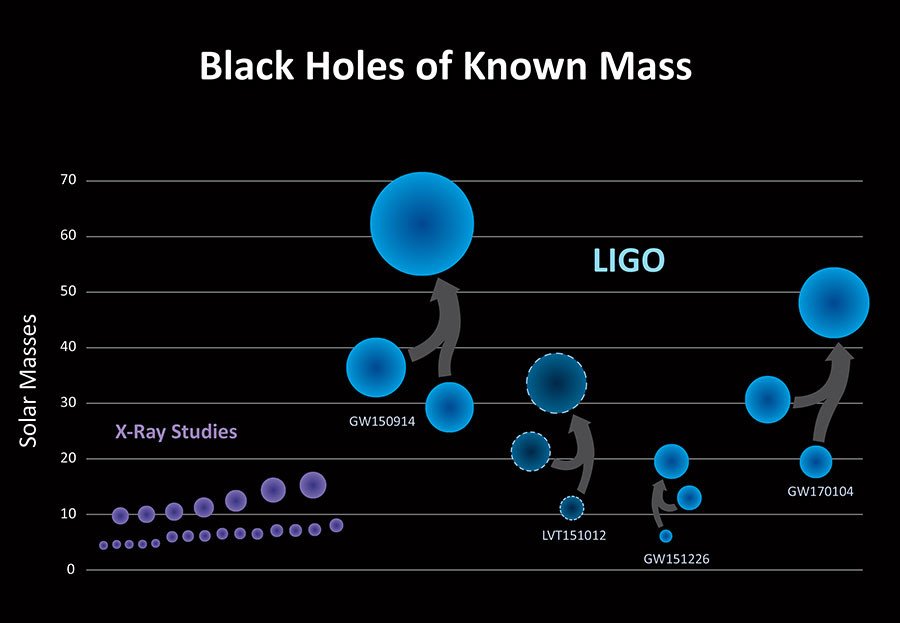3bn years old & 3bn light years away – but black hole cosmic wave detected in 2017

Albert Einstein's once-theoretical gravitational waves were detected in January for only the third time in history, scientists announced Thursday.
The waves are ripples in space which permeate through time when two black holes smash together to create a supermassive one.
Einstein predicted gravitational waves over a century ago but they remained elusive until September 2015 when scientists working with the Laser Interferometer Gravitational Wave Observatory (LIGO) picked up the cosmic vibrations.
These vibrations are caused when massive celestial objects – in this latest case two black holes – smash together and merge, triggering ripples in space that echo through time and are picked up by LIGO here on Earth.
The newly found black hole has the a mass roughly 49 times the size of our sun. The previous two detections, also caused by black hole collisions, had a solar masses of 62 and 21 times that of the sun.
These collisions produce more power than is radiated as light by all the stars and galaxies in the universe at any given time.

LIGO/Caltech/Sonoma State (Aurore Simonnet)
"We have further confirmation of the existence of stellar-mass black holes that are larger than 20 solar masses – these are objects we didn't know existed before LIGO detected them," MIT's David Shoemaker, spokesman for the LIGO Scientific Collaboration said in a press release.
"It is remarkable that humans can put together a story, and test it, for such strange and extreme events that took place billions of years ago and billions of light-years distant from us. The entire LIGO and Virgo scientific collaborations worked to put all these pieces together,” he added.
NASA discovers ‘beating heart’ of distant black hole (PHOTO) https://t.co/OaQX3gpExypic.twitter.com/WrVR6hUyn3
— RT (@RT_com) April 21, 2017
LIGO picked up the latest space-time ripple on January 4 of this year, quickly determining that the collision occurred an astonishing 3 billion light years away, meaning that the vibrations had been travelling for 3 billion years before reaching LIGO’s instruments on our pale blue dot.
The theory of gravitational wave fascinates scientists seeking to develop and utilise it in order to discover more about how our universe came into existence.
The first detection caused more than a ripple through the scientific community here on Earth and this latest one is a turning point in the relatively new field of gravitational-wave astronomy.
“We’re really moving from novelty to a new observational science,” said Shoemaker.
LIGO is also on the hunt for other celestial objects, including colliding neutron stars, objects so dense that a single teaspoon of worth of them would weigh 10 million tons (metric) on Earth.












